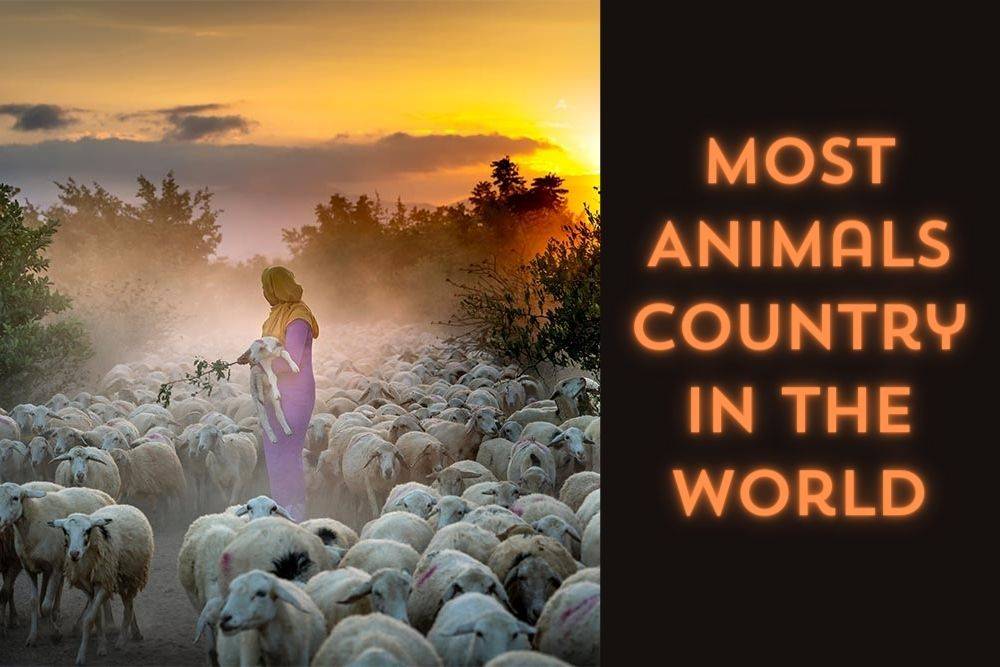Most Animals Country in the World: Exploring Biodiversity Wonders
Biodiversity is a testament to the incredible variety of life on Earth, and certain countries stand out as champions of this diversity. From the lush rainforests of the Amazon to the frigid expanses of the Arctic Circle, each region boasts a unique collection of fauna. In this exploration, we delve into the topic of the “Most Animals Country in the World,” unraveling the wonders of biodiversity on a global scale.
The Amazon Rainforest: A Biodiversity Hotspot
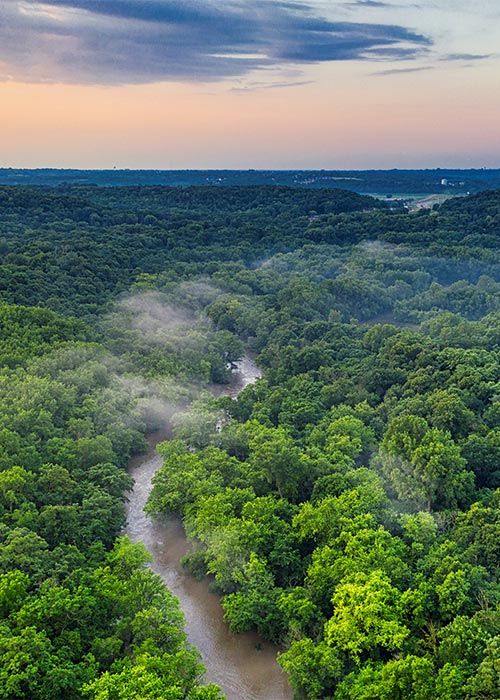
“The Amazon Rainforest: A Biodiversity Hotspot” stands as a mesmerizing testament to the unparalleled richness of life on our planet. Spanning over nine countries and covering approximately 40% of South America, the Amazon Rainforest is a colossal expanse of greenery that houses an astonishing diversity of flora and fauna. Within this vast ecosystem, the term “biodiversity hotspot” takes on a profound meaning, signifying a region of exceptional biological diversity and ecological significance.
The heart of the Amazon Rainforest, often considered the Most Animals Country in the World, beats with an estimated 390 billion individual trees, hosting around 16,000 different species. This staggering biodiversity encompasses a kaleidoscope of life, from the majestic jaguar and elusive ocelot to the vibrantly hued poison dart frog. The richness of plant species, many yet to be discovered, adds to the allure of the rainforest. Scientists continue to make groundbreaking discoveries in this dense tapestry of life, uncovering new species and unlocking the secrets of intricate ecological relationships.
The Amazon’s biodiversity extends beyond visible inhabitants, including a myriad of microorganisms, insects, and avian species. The intricate interdependence of these diverse life forms creates a delicate balance sustaining the entire ecosystem. Moreover, the Amazon Rainforest, often hailed as the Most Animals Country in the World, plays a crucial role in global climate regulation, acting as a significant carbon sink and influencing weather patterns. The urgency to conserve and protect this biodiversity hotspot is underscored by its interconnectedness with the health of the planet. As deforestation and human activities threaten this vital region, efforts to preserve the Amazon’s biodiversity become not only a regional concern but a global imperative for the well-being of our planet.
Australia: A Unique Ecosystem
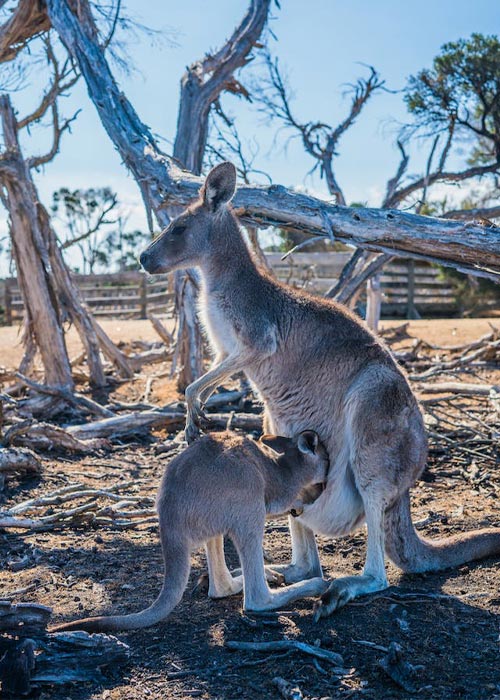
Australia, often hailed as the “Land Down Under,” boasts a truly distinctive ecosystem that sets it apart on the global stage. Shaped by millions of years of isolation, this vast continent is home to a plethora of endemic species found nowhere else in the world. At the heart of Australia’s unique biodiversity lies its marsupials, a group of mammals characterized by the pouch in which they carry and nurture their young. Kangaroos, koalas, and wombats are iconic examples of these marsupials, embodying the evolutionary quirkiness that defines Australia’s wildlife.
The continent’s isolation from other landmasses allowed its flora and fauna to evolve independently, resulting in a remarkable array of adaptations. Beyond the marsupials, Australia is renowned for its extraordinary birdlife, with colorful parrots, emus, and the flightless cassowary captivating observers. The unique ecological niches created by the continent’s diverse landscapes, ranging from arid deserts to lush rainforests, contribute to the evolution of species with specialized traits and behaviors, fostering a biodiversity tapestry that is as complex as it is fascinating.
However, Australia, the Most Animals Country in the World, faces contemporary challenges, including habitat loss, climate change, and the impact of introduced species. Conservation efforts are crucial to preserving the delicate balance that characterizes this remarkable ecosystem. As we explore the wonders of Australia’s biodiversity, it becomes evident that safeguarding its unique flora and fauna is not just a local concern but a global responsibility.
African Safari: Diversity on the Savannah
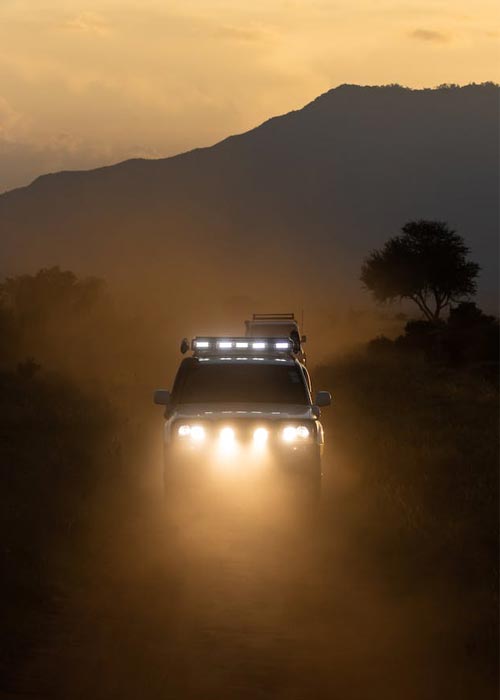
Embarking on an African safari is a captivating journey into the heart of the world’s Most Animals Country in the World – the savannah. This vast and iconic landscape stretches across the continent, offering a spectacular showcase of biodiversity that has captured the imaginations of wildlife enthusiasts and conservationists alike.
Most Animals Country in the World’s Savannah’s Big Five and Beyond:
The African savannah is renowned for hosting the Big Five—lion, elephant, buffalo, leopard, and rhinoceros. These majestic animals symbolize the untamed beauty and raw power of the wilderness. Yet, beyond these charismatic species, the savannah is teeming with a multitude of life, from graceful antelopes and giraffes to agile cheetahs and elusive predators like hyenas. Each species plays a crucial role in the delicate balance of the ecosystem, contributing to its rich tapestry of life.
Conservation Challenges in Most Animals Country in the World’s Savannah:
Despite the breathtaking abundance of wildlife, the African savannah faces significant conservation challenges. Threats such as habitat loss, poaching, and human-wildlife conflict jeopardize the delicate equilibrium of this ecosystem. Conservation initiatives are essential to safeguarding these irreplaceable species and preserving the intricate web of interactions that sustains life on the savannah.
Local Communities and Conservation in Most Animals Country in the World’s Savannah:
African safaris provide not only a mesmerizing wildlife spectacle but also an opportunity for travelers to engage with local communities. Responsible tourism fosters a symbiotic relationship between wildlife conservation and the well-being of the people who share their land with these creatures. Sustainable practices and community involvement are integral to ensuring the long-term survival of the savannah’s biodiversity.
The Call of the Most Animals Country in the World’s Wild:
An African safari is a transformative experience, inviting individuals to witness the wonders of the natural world in its purest form. The sight of a lioness on the prowl, the trumpeting of elephants, and the vast herds migrating across the plains create indelible memories. Beyond being a visual feast, an African safari instills a deep appreciation for the interconnectedness of all life and the urgent need to preserve these wild spaces for generations to come.
The Oceans: Marine Biodiversity
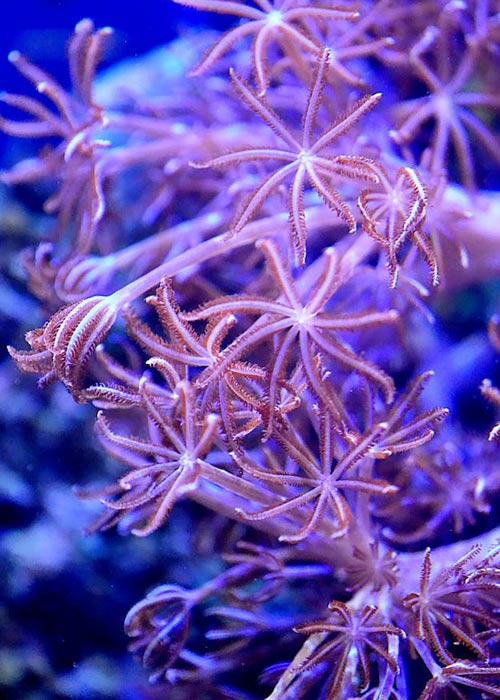
The world’s oceans, covering over 70% of the Earth’s surface, constitute a vast and dynamic realm of unparalleled biodiversity. Within these expansive aquatic landscapes, marine biodiversity thrives in a myriad of ecosystems, ranging from vibrant coral reefs to the mysterious depths of the open sea. The diversity of marine life is staggering, encompassing an array of species, from the smallest microscopic plankton to the awe-inspiring giants like whales and sharks.
Beneath the Waves: Coral Reefs and Underwater Ecosystems
One of the most extraordinary manifestations of marine biodiversity is found in coral reefs. These underwater ecosystems, often referred to as the “rainforests of the sea,” are teeming with a kaleidoscope of marine species. Colorful corals provide a structural foundation for a vast array of fish, invertebrates, and other organisms, creating intricate and delicately balanced ecosystems. The symbiotic relationships within coral reefs are crucial to the survival of numerous species, forming a tapestry of life beneath the waves.
Challenges to Marine Animal Diversity
Despite the richness of marine biodiversity, these ecosystems face significant threats. Human activities, such as overfishing, pollution, and climate change, pose grave risks to the delicate balance of marine life. Coral bleaching, driven by rising sea temperatures, threatens the very existence of coral reefs. The depletion of marine species disrupts the intricate web of life in the oceans, impacting not only the underwater world but also the livelihoods of human communities dependent on marine resources.
Preserving the Ocean’s Rich Tapestry
Preserving marine biodiversity is not only a matter of ecological importance but also a necessity for the well-being of our planet. Conservation efforts, marine protected areas, and sustainable fishing practices are critical to mitigating the impact of human activities. Understanding and valuing the interconnectedness of marine ecosystems and the services they provide is essential for fostering a sustainable coexistence between humans and the diverse array of life beneath the waves. The oceans, with their immense biodiversity, remain a source of wonder and discovery, emphasizing the need for responsible stewardship to ensure their health and vitality for generations to come.
Madagascar: An Island of Peculiar Species

Madagascar, an island situated in the Indian Ocean off the southeastern coast of Africa, stands as a unique and isolated haven for biodiversity. Often referred to as the “eighth continent,” Madagascar’s evolutionary journey, shaped by millions of years of separation from mainland Africa, has resulted in a remarkable array of peculiar and endemic species. The isolation of the island has given rise to an extraordinary biodiversity hotspot, with approximately 90% of Madagascar’s wildlife found nowhere else on Earth. This includes a diverse range of lemurs, chameleons, and other fascinating creatures that have evolved in splendid isolation.
The lemurs of Madagascar are perhaps the most iconic inhabitants, with over 100 different species displaying a wide range of sizes, behaviors, and adaptations. These primates showcase the island’s rich evolutionary tapestry, and their distinctiveness has captivated researchers and nature enthusiasts alike. In addition to lemurs, Madagascar is home to a myriad of chameleons, each uniquely adapted to its specific ecological niche. The island’s diverse ecosystems, from lush rainforests to arid landscapes, contribute to the proliferation of these peculiar species.
Despite its ecological significance, Madagascar faces numerous challenges, including habitat loss due to deforestation, climate change, and human activities. Conservation efforts are crucial to preserving the island’s unique biodiversity and ensuring the survival of species found nowhere else in the world. International collaborations and sustainable practices are essential to protect Madagascar’s ecological treasures and promote the coexistence of its peculiar species with the ever-changing dynamics of the modern world.
Conclusion
In conclusion, Brazil reigns supreme as the world’s “Most Animals Country” thanks to its incredible tapestry of ecosystems. The vast Amazon rainforest, the world’s largest, provides a lush haven for countless species. Here, jaguars stalk the forest floor, monkeys swing through the canopy, and vibrant birds flit amongst the dense foliage. Beyond the rainforest, the dry savannas of the cerrado harbor unique creatures adapted to fire and drought, while the Pantanal wetlands – the world’s largest freshwater floodplain – teem with aquatic life, from the elusive jaguarundi to the mighty caiman. This rich mosaic of habitats, combined with Brazil’s location in the tropics, creates a perfect environment for an explosion of life. While Brazil holds the crown, it’s vital to recognize the extraordinary biodiversity found in other countries. From the teeming coral reefs of Indonesia to the diverse landscapes of Madagascar, our planet holds a wealth of irreplaceable fauna. Protecting these animal kingdoms through conservation efforts is not just about preserving species, it’s about safeguarding the delicate balance of our planet’s ecosystems.
FAQs (Frequently Asked Questions)
Why is the Amazon Rainforest considered a biodiversity hotspot?
The Amazon Rainforest houses an extraordinary variety of plant and animal species, making it a hotspot for biodiversity. The diverse ecosystems within the rainforest support countless unique life forms.
What makes Australia’s wildlife unique?
Australia’s isolation has led to the evolution of distinctive wildlife, with marsupials like kangaroos and koalas being iconic examples. The country’s flora and fauna showcase evolutionary adaptations found nowhere else.
How does human activity impact marine biodiversity?
Activities such as overfishing, pollution, and climate change pose significant threats to marine biodiversity. Coral reefs, in particular, are vulnerable to environmental stressors.
Why is Madagascar known as an island of peculiar species?
Madagascar’s isolation has allowed for the evolution of species found nowhere else. Lemurs, chameleons, and other unique fauna characterize the island’s rich biodiversity.
What role does biodiversity play in human well-being?
Biodiversity contributes to human well-being by providing ecosystem services, supporting agriculture, offering medicinal resources, and contributing to cultural and recreational activities.
Read About Top Animals That Kill Humans

